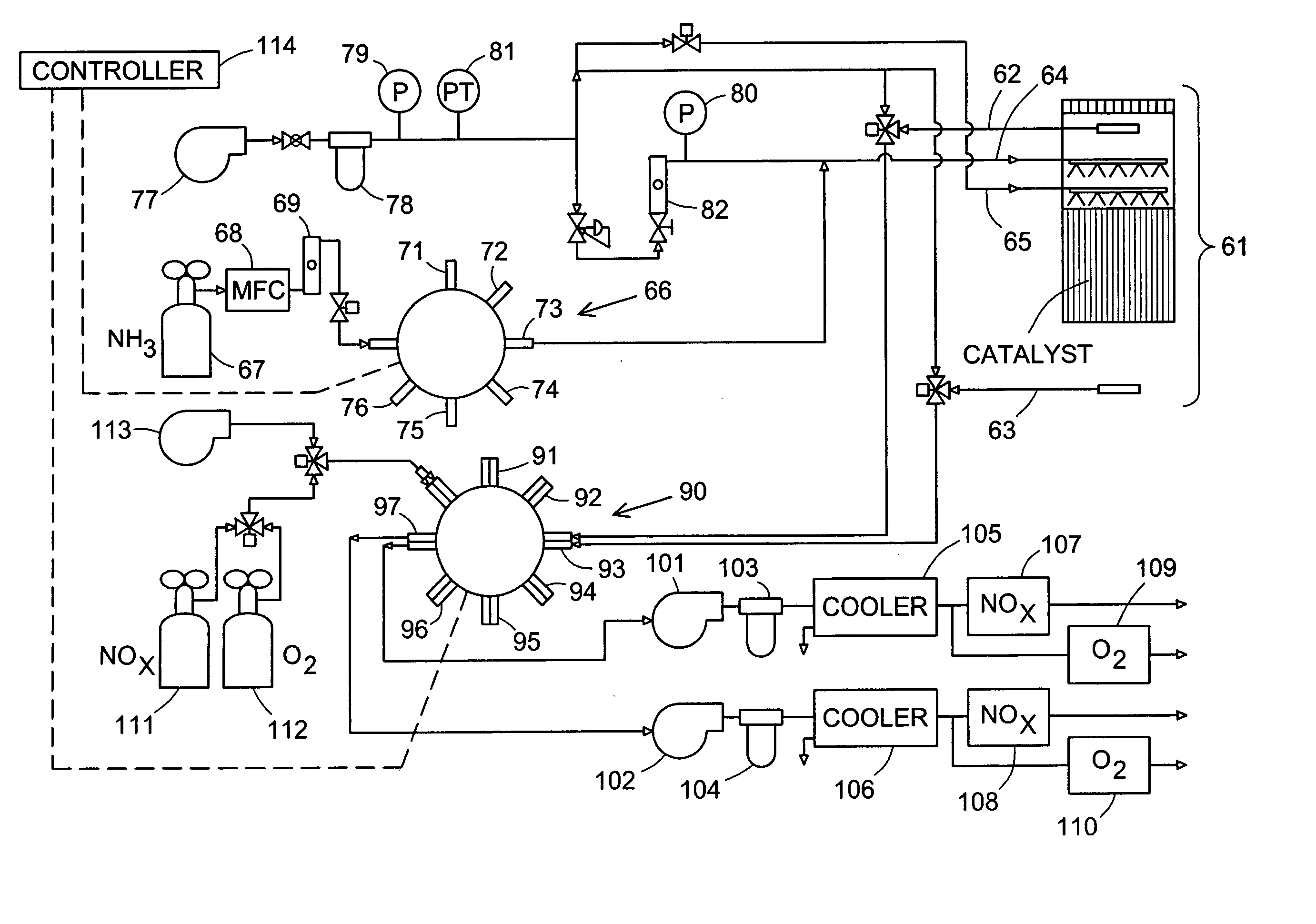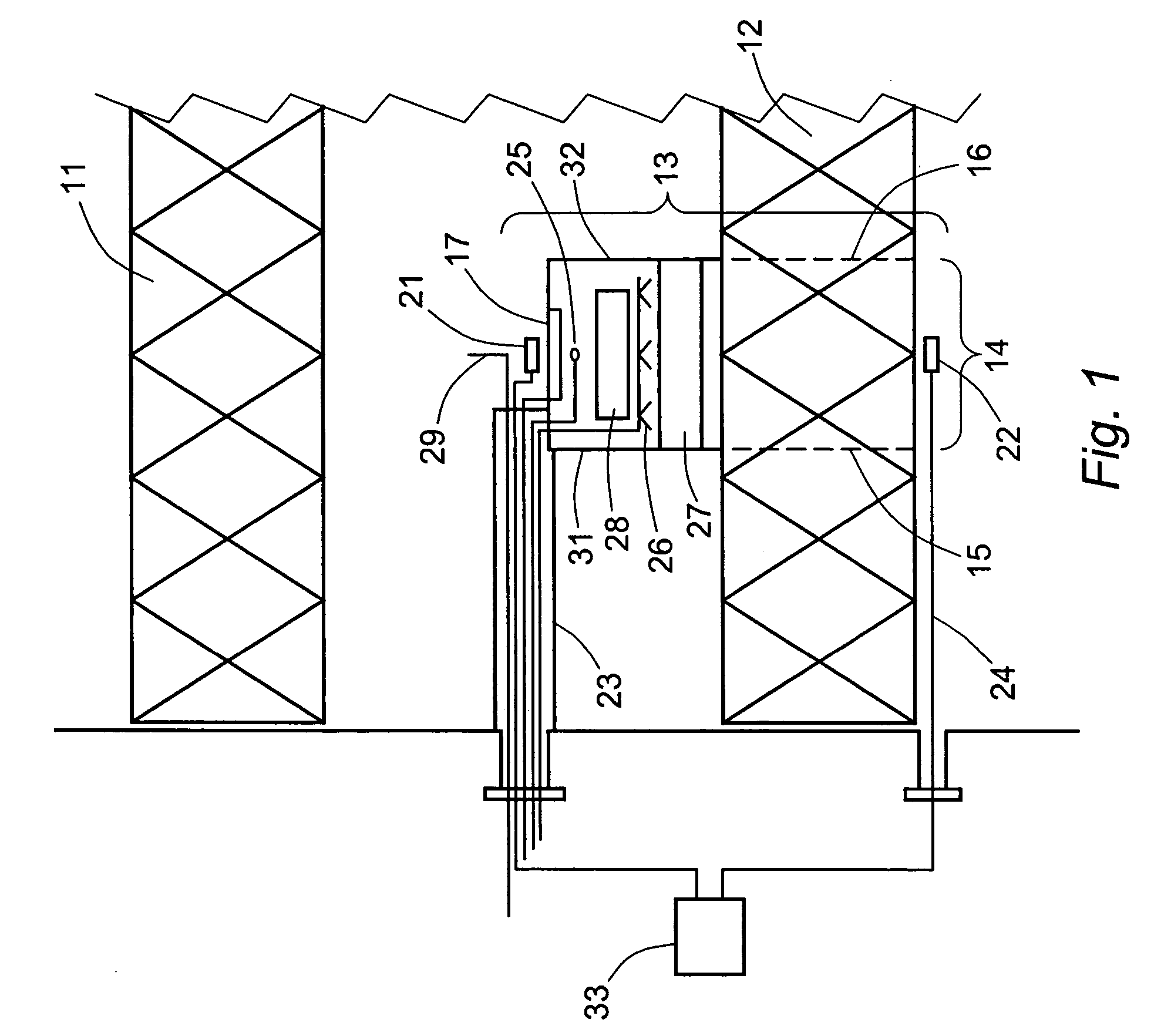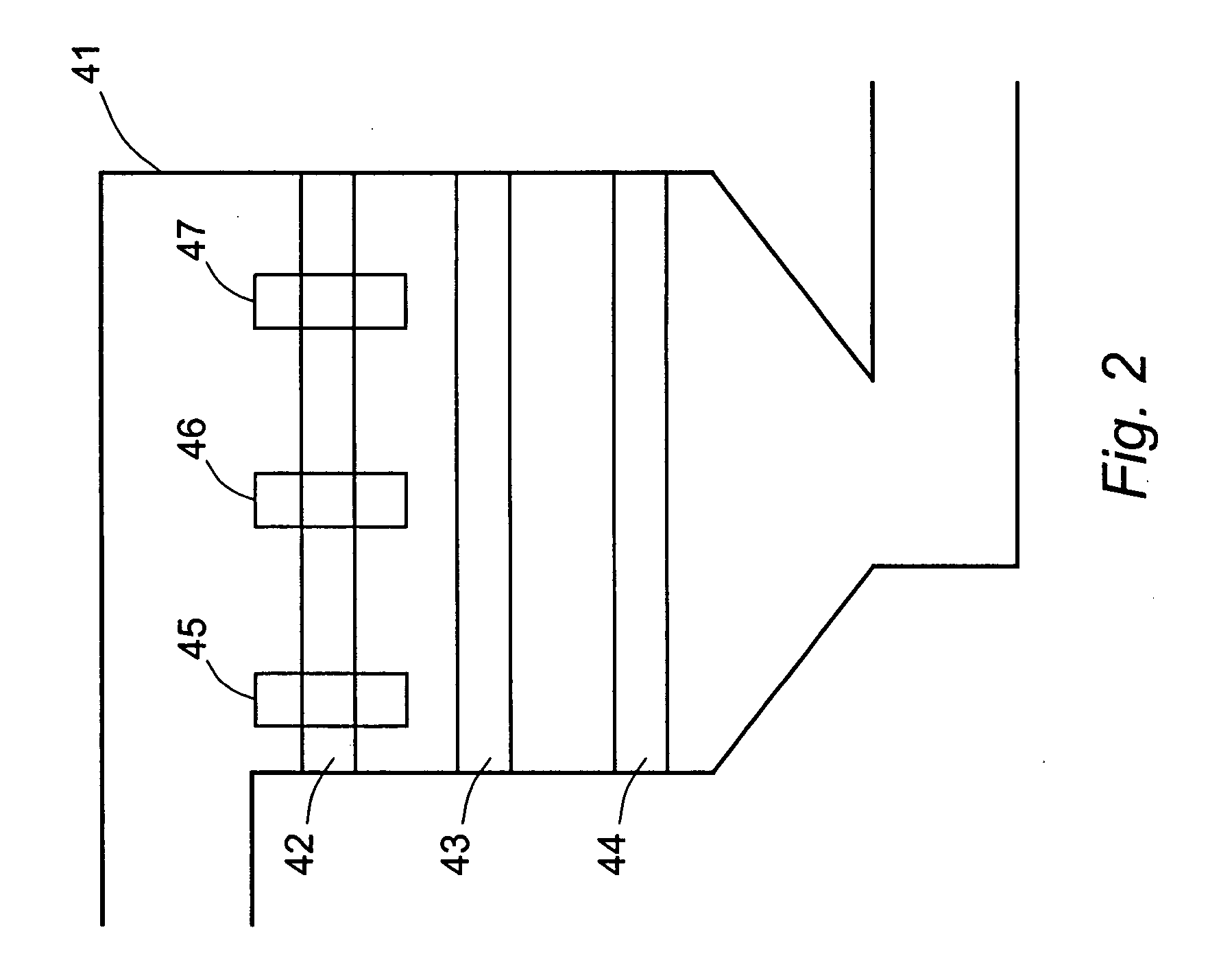In-line localized monitoring of catalyst activity in selective catalytic NOx reduction systems
- Summary
- Abstract
- Description
- Claims
- Application Information
AI Technical Summary
Benefits of technology
Problems solved by technology
Method used
Image
Examples
example
[0045] An example of a three-layer SCR unit is one that has flue gas flowing through the unit at a space velocity of 2,500 hour−1 (the volumetric flow rate of the gas at standard temperature and pressure divided by the catalyst volume) and a linear gas velocity of 15 ft / sec (4.6 m / sec), and whose inlet NOx level is 0.41 lb / 106 Btu (300 ppm at 3% 02), whose inlet NH3 / NOx mole ratio is 0.9, and whose temperature is 700° F. (370° C.). The gas flowing across the individual catalyst layers has the following composition parameters:
Bed No.:123Inlet:mole ratio NH3 / NOx0.900.470.7ppm NOx3005732moles / min NOx0.00130.00020.0001Outlet:mole ratio NH3 / NOx0.470.07ppm NOx573230ppm NH3 slip26.632.280.00ΔNOx (%)81438
[0046] With modules on each of the three layers, each module being 2 feet square (0.4 square meter), the ammonia added to the module in each layer is as follows:
PUM
| Property | Measurement | Unit |
|---|---|---|
| Area | aaaaa | aaaaa |
| Area | aaaaa | aaaaa |
| Time | aaaaa | aaaaa |
Abstract
Description
Claims
Application Information
 Login to View More
Login to View More - R&D
- Intellectual Property
- Life Sciences
- Materials
- Tech Scout
- Unparalleled Data Quality
- Higher Quality Content
- 60% Fewer Hallucinations
Browse by: Latest US Patents, China's latest patents, Technical Efficacy Thesaurus, Application Domain, Technology Topic, Popular Technical Reports.
© 2025 PatSnap. All rights reserved.Legal|Privacy policy|Modern Slavery Act Transparency Statement|Sitemap|About US| Contact US: help@patsnap.com



